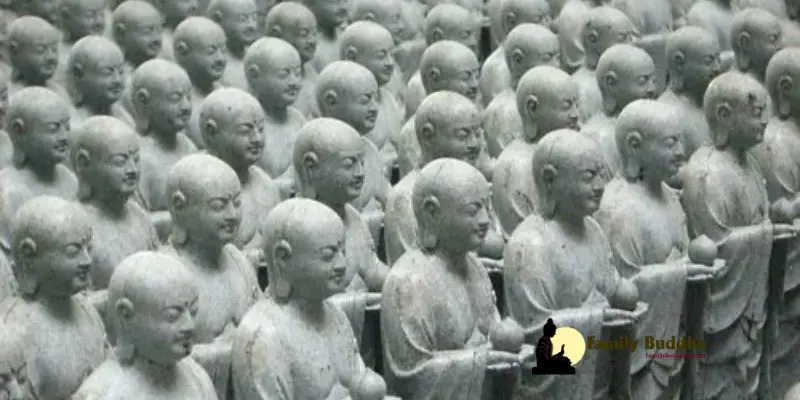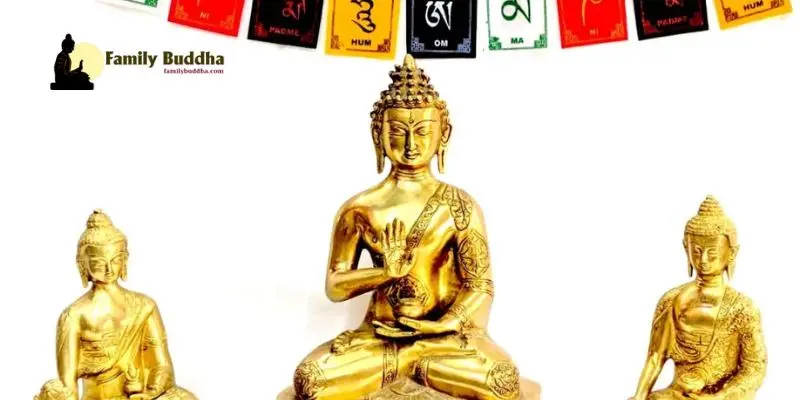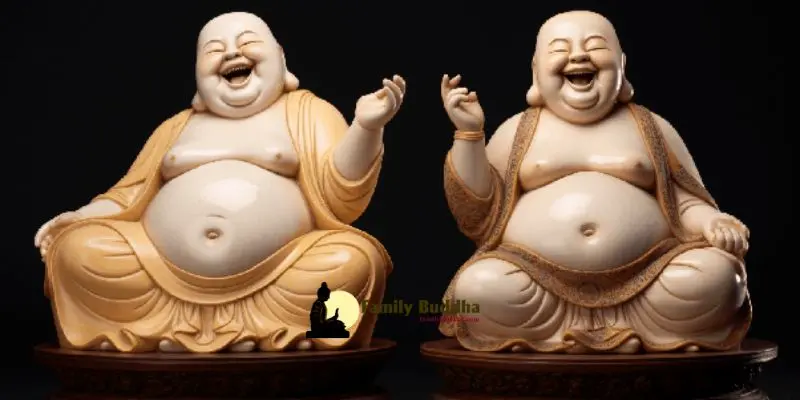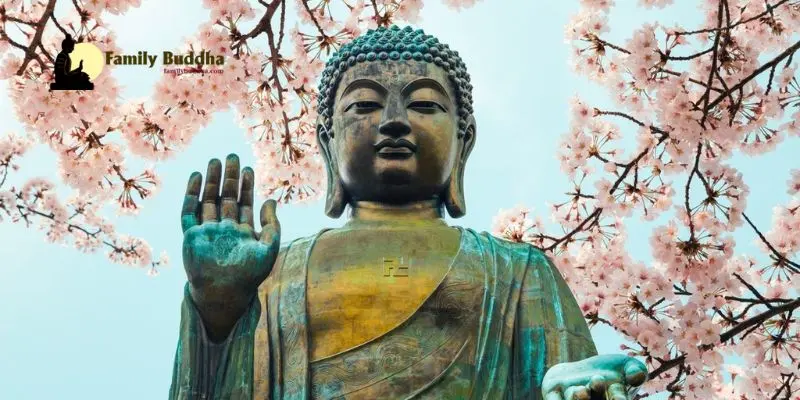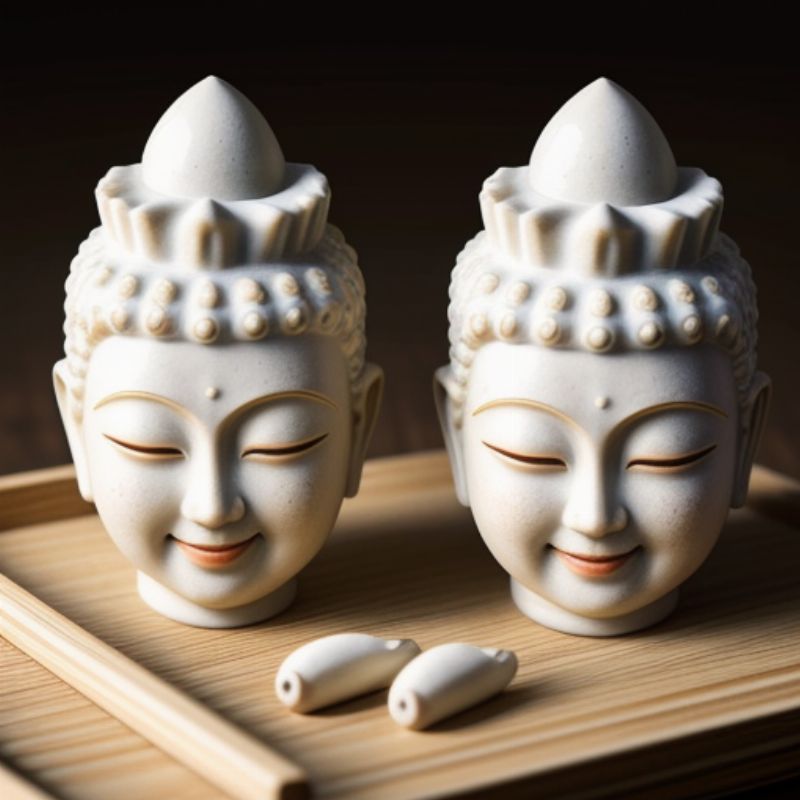Statues depicting the historic Buddha grace nearly every Buddhist temple. While not worshipped as a deity, they serve as potent symbols, guiding believers along the path. At first glance, they may seem mere representations of Siddhartha Gautama. Yet, closer inspection reveals intriguing details, such as the Buddha’s notably elongated ears. So, why does Buddha have long earlobes? Familybuddha will explore the significance of this portrayal in Buddhism, along with two other distinctive features of these statues.
Why does Buddha have long earlobes? The origin story
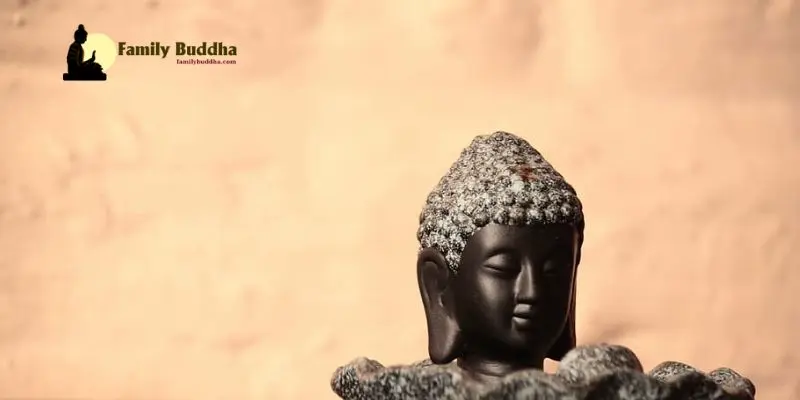
The tale of Buddha’s ears traces back to his youth! Born into royalty in what is now Nepal, Siddhartha Gautama was a prince destined for his father’s throne or perhaps for a life of luxury. Like others of his stature, he was accustomed to displaying his wealth.
Typically, this entailed adorning himself with luxurious jewelry crafted from an array of precious gemstones and wearing expensive garments. Put simply, the young Siddhartha Gautama, much like others in his social circle, adorned his person with these opulent possessions. Notably, heavy earrings, akin to those still worn in certain regions of Asia, Africa, and India, were among his adornments.
As time passed, the weight of his jewelry caused his earlobes to elongate gradually. Yet, this distortion remained inconspicuous, as the splendor of the gemstones he wore partly concealed his ears. However, this circumstance would change dramatically when Siddhartha Gautama, later known as the historical Buddha, underwent a transformative journey in his life.
The New Chapter of Siddhartha Gautama’s Life and His Relationship with His Prominent Ears
Once Siddhartha Gautama embraced his newfound destiny, he embarked on a journey of asceticism, renouncing all the privileges of his royal upbringing to embrace a life of simplicity. This entailed cutting his once luxurious hair, forsaking the ornate jewelry adorning his body, and discarding his elaborate garments.
With the removal of his earrings, the historical Buddha had nothing left to obscure his elongated earlobes. Cloaked simply in robes as a wandering ascetic, his prominent ears became visible to all who encountered him. While some were familiar with the reason behind this distinctive feature, others were taken aback by its unfamiliar appearance.
What Do the Large Ears of the Buddha Symbolize in Buddhism?

As anticipated, the large ears of the historical Buddha carry numerous symbolic meanings. Much like his various postures, these interpretations vary depending on the context in which they are viewed.
The Symbolism of the Buddha’s Large Ears: Absolute Renunciation and Listening Ability
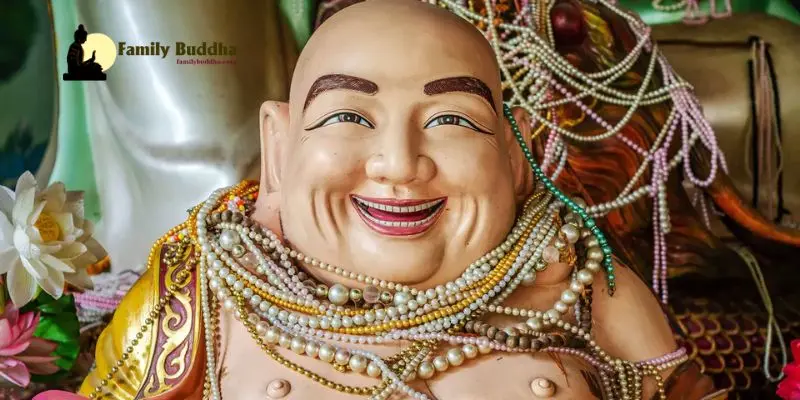
Within Buddhism, statues depicting the Buddha with prominent ears are primarily seen as a symbol of renunciation. The absence of jewelry and wealth associated with such elongated lobes signifies the Buddha’s complete detachment from material possessions, marking a clear departure from his previous life.
This differentiation is emphasized by the bare yet expansive ears, symbolizing the path of relinquishment that leads toward enlightenment, or nirvana. Essentially, it signifies the Buddha’s ability to abandon all worldly attachments in pursuit of spiritual liberation.
Furthermore, the Buddha’s large ears are also interpreted as a symbol of his attentive and compassionate nature. In Buddhism, attentive listening is regarded as a manifestation of wisdom, and the Buddha’s prominent ears symbolize his capacity for profound understanding and empathy.
Moreover, the significance of this distinction extends beyond individual enlightenment. It also represents the inclusive and generous nature of Buddhism as a belief system. The large ears of the Buddha symbolize an openness and welcoming attitude towards all beings, reflecting the universal accessibility and acceptance inherent in Buddhist teachings.
As an added insight, what other distinctive features can be observed in representations of Buddha?
Apart from the prominent ears, other notable characteristics might catch one’s eye. For instance, the presence of various Buddha statues in different poses raises questions. Why are there multiple depictions of Buddha in various postures? Additionally, why do some portray a slender figure while others depict a more corpulent form?
The significance behind the diverse poses of Buddha statues lies in their representation of different moments in Siddhartha Gautama’s spiritual journey. Each posture reflects a specific stage or aspect of his enlightenment and teachings.
In essence, these diverse representations serve as poignant reminders to every Buddhist of the stages in the journey towards enlightenment and the adaptive skills necessary for navigating life’s challenges. If you’ve never noticed these variations, they typically encompass differences in posture—whether sitting, lying, or standing—along with variations in arm and foot positioning, as well as facial expressions and attire.
Now, let’s explore the distinction between fat and thin Buddhas. Alongside the discussion of Buddha’s prominent ears, the portrayal of his physique is also noteworthy. Indeed, within various temples and across different regions, one may encounter two distinct depictions of Buddha: one characterized by a jovial, rotund figure, and the other by a slender, serene form.
However, to assert that these two representations are identical would be erroneous. We invite you to explore our detailed article on this subject, which delves into the origins of the larger Buddha figure. As for the thinner representation, it is none other than Siddhartha Gautama himself, whom we have discussed since the outset of this discourse.

